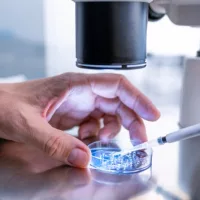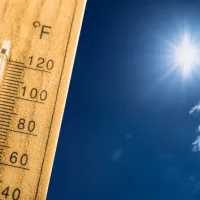
Vadym Terelyuk/iStock(NEW YORK) — Hospitals across the U.S. battling the coronavirus have been consistently reporting shortages of personal protective gear, ventilators and drugs used to help patients with pain management. But medical professionals in the state that’s become the front line in America’s fight against COVID-19 say they’re concerned about the flow of oxygen itself to patients.
“The hospital was close to running out of oxygen,” said an emergency room doctor at Elmhurst Hospital in Queens, New York, which has become known as the epicenter of the outbreak in the state. “With the number of patients we have, We are using up resources at an unusual rate.”
Across the city in Brooklyn, Dr. Dorian Alexander at Brookdale Hospital said, “We burn through oxygen everyday.”
“We’re consuming oxygen faster than we’ve ever consumed oxygen in hospitals before,” said Dr. Peter Papadakos, the director of critical care medicine and professor of anesthesiology, surgery and neurosurgery at the University of Rochester Medical Center.
The New York-Presbyterian system is trying to alleviate the stress on its hospitals by sending some stable patients home with small oxygen tanks, according to sources familiar with the matter.
In most cases, the patients have been discharged from the emergency department with often positive but not severe cases of coronavirus and are provided with a portable meter that measures oxygen levels to track how they are doing or home oxygen tanks. The patients, sources said, then have a follow-up a tele-visit from a physician within 12 to 24 hours.
COVID-19 patients who are hospitalized can develop pneumonia and end up in respiratory distress. When breathing becomes difficult patients often require supplemental oxygen. But the spike in demand for oxygen by coronavirus cases directly impacts other non-coronavirus patients, and could strain oxygen resources for everyone who relies on it inside and outside the hospital, Papadakos told ABC News.
“How do you ration it? There are hundreds of thousands of patients,” he said. “You’ve seen them down in Florida or if you’ve taken a cruise, walking around with their little oxygen tanks. There’s people getting oxygen at home in tanks. Your grandma, the lady down the street. What happens when they can’t get oxygen because of the pandemic?”
The air people breathe is about 21% oxygen, but more highly concentrated, pressurized oxygen is a commodity, especially in medicine. In most circumstances, oxygen is produced in plants and facilities across the country two general ways. Larger, high-pressure tanks are typically sent to hospitals and other medical facilities. Lower pressure tanks, which are typically smaller, are designed for personal use.
One of the world’s largest oxygen suppliers, Air Products, is “not currently experienc[ing] production shortages in our businesses, including medical oxygen,” company spokesperson Art George said. “Where we can around the world, we are building inventory. Our employees are proud to be considered business critical and be making a vital contribution to this effort. This is a dynamic situation and we are preparing to take the appropriate steps to help meet potential future needs as best we can.”
Air Products in the U.S. does not produce oxygen in tanks, according to George, but does provide oxygen to distributors who do. “We are giving high priority to distributors who deliver oxygen to the medical industry and prioritizing fill scheduling to this safety sensitive and critical industry,” George added.
Linde plc, an Irish chemical company that owns and operates Praxair, and Airgas, together two of the largest industrial gas suppliers in the U.S., said they have seen an increased demand for oxygen from hospitals, medical centers and providers due to coronavirus cases, according spokespersons for both companies.
“As COVID-19 is predominantly a respiratory disease, and as patient numbers continue to rise, we’re going to see an increase in demand for medical oxygen” said Dr. David Ferraro, the Society of Critical Care Medicine Fundamental Disaster Management vice chair.
He said it will be vital for hospital systems nationwide to keep a close eye on their current supply of oxygen, as if it were necessities like personal protective equipment, ventilators, regularly used medications and other resources related to COVID-19 — as well as their supply chains. Current and potential shortages with which states like New York are dealing may become the problems of other states soon when their own surge begins, Ferraro said.
“Hospitals need to be smart and wise with oxygen use. We might take some aspects of medical therapy for granted, like the supply of medical oxygen. Oxygen for medical use still has to be produced, however, just like medications and [personal protective equipment],” he said. “We are realizing that there is not an infinite supply. Oxygen might become a limited commodity just like ventilators or medications if supply chains cannot keep up with our increased demand. If so, it will be just like a precious metal that we don’t have an infinite amount of, such as gold.”
Normal oxygen saturation levels are usually around 95-100%. According to COVID-19 guidance from the World Health Organization, patients in severe breathing distress should have oxygen saturation levels above 94%.
But Ferraro said there are ways for hospitals to conserve conserve oxygen use, suggesting they pay close attention to each patient’s oxygen level to make sure only those who really need it, get it — especially once breathing begins to improve. The World Health Organization guidance says for stable patients, the range may be 90-95% oxygen saturation depending on the patient.
“If a patient’s oxygen saturations while on oxygen supplementation are well over this goal of 90 to 92%, we are potentially not conserving our oxygen utilization,” said Ferraro. “If you had a band-aid shortage, why put five band-aids on a cut if you only need one?”
Copyright © 2020, ABC Audio. All rights reserved.















